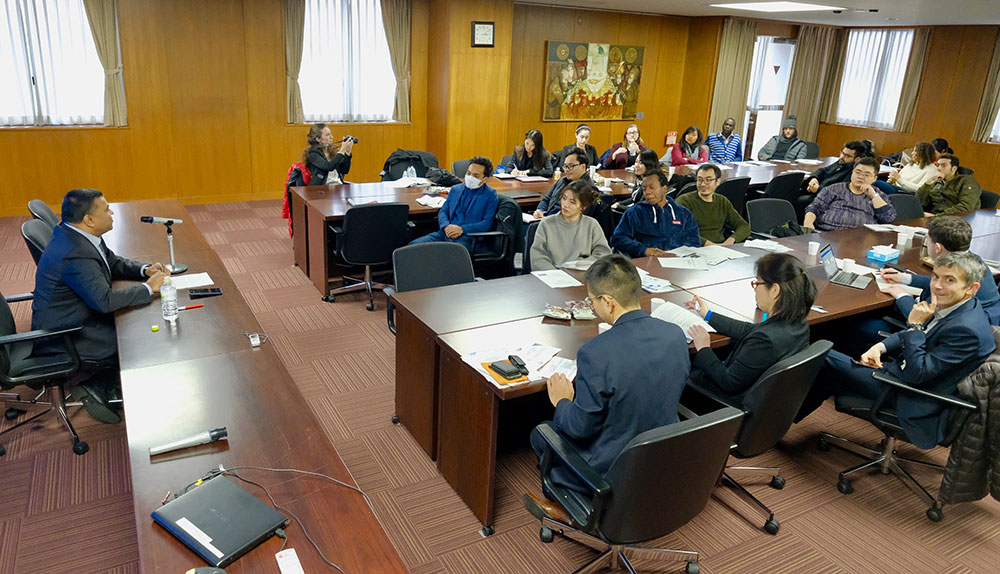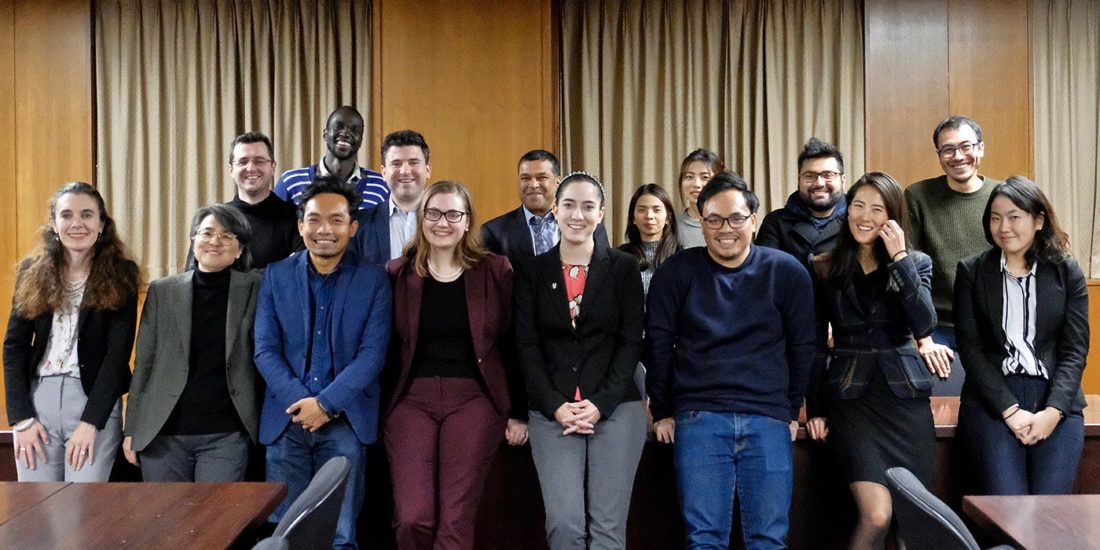The OSIPP-IAFOR Research Centre (IRC) at OSIPP, Osaka University, Japan, welcomed six young academics visiting OSIPP as the Year 1 Cohort (January-March 2019) of the U.S. – Japan – Southeast Asia Partnership in a Dynamic Asia Fellowship which is run with the East-West Center, in Washington DC and supported by The Japan Foundation, and the U.S. Embassy Tokyo.
The event was marked by the OSIPP-IRC 2019 Special Talk and Roundtable – the first for 2019 – with a special lecture by Dr Satu Limaye, Director, East-West Center in Washington, DC. The lecture was titled New Avenues for Cooperation and Collaboration in the Indo-Pacific.

Dr Satu Limaye, Director, East-West Center, Washington, DC, speaking at the first OSIPP-IAFOR Research Centre (IRC) Special Talk and Roundtable for 2019 titled: "New Avenues for Cooperation and Collaboration in the Indo-Pacific".
An erudite discussion of the evolution of the concept “Pacific”

Dr Satu Limaye in discussion with the new Fellows.
Dr Satu Limaye posed the question whether the United States has a free and open Indo-Pacific Strategy or is it a case new wine or a new bottle? He went on to offer an erudite discussion of the evolution of the concept “Pacific” from the perspective of the United States. According to Dr Limaye, while shared interests and values with Asian allies continue to influence American foreign policy posture towards the region, both the increasing concern about China and the U.S.-Japan alliance’s shift from rule-based order to a bilateral one highlight the changes to the current “America’s Pacific Century”.
With the present Indo-Pacific strategy, the United States sees China a strategic competitor, and India as a counter to China. Moreover, the United States now appears to give a more favorable view to Southeast Asian institutions, such as APEC and ASEAN, than its Western counterparts, NATO and the EU. Despite these ups and downs, the US-Japan Alliance remains a major enabling factor for U.S. presence in the region. The lecture ended with OSIPP students and EW-IRC fellows raising insightful comments and questions about the level of commitment from the United States, its role in “history issues”, and policy implications to domestic and regional affairs in East Asia.
More Information
Read the announcement of the OSIPP-IAFOR Research Centre/East West Center collaboration
Read about the Program on the East-West Center in Washington Website
Read about the Programme on the IAFOR Research Centre website

